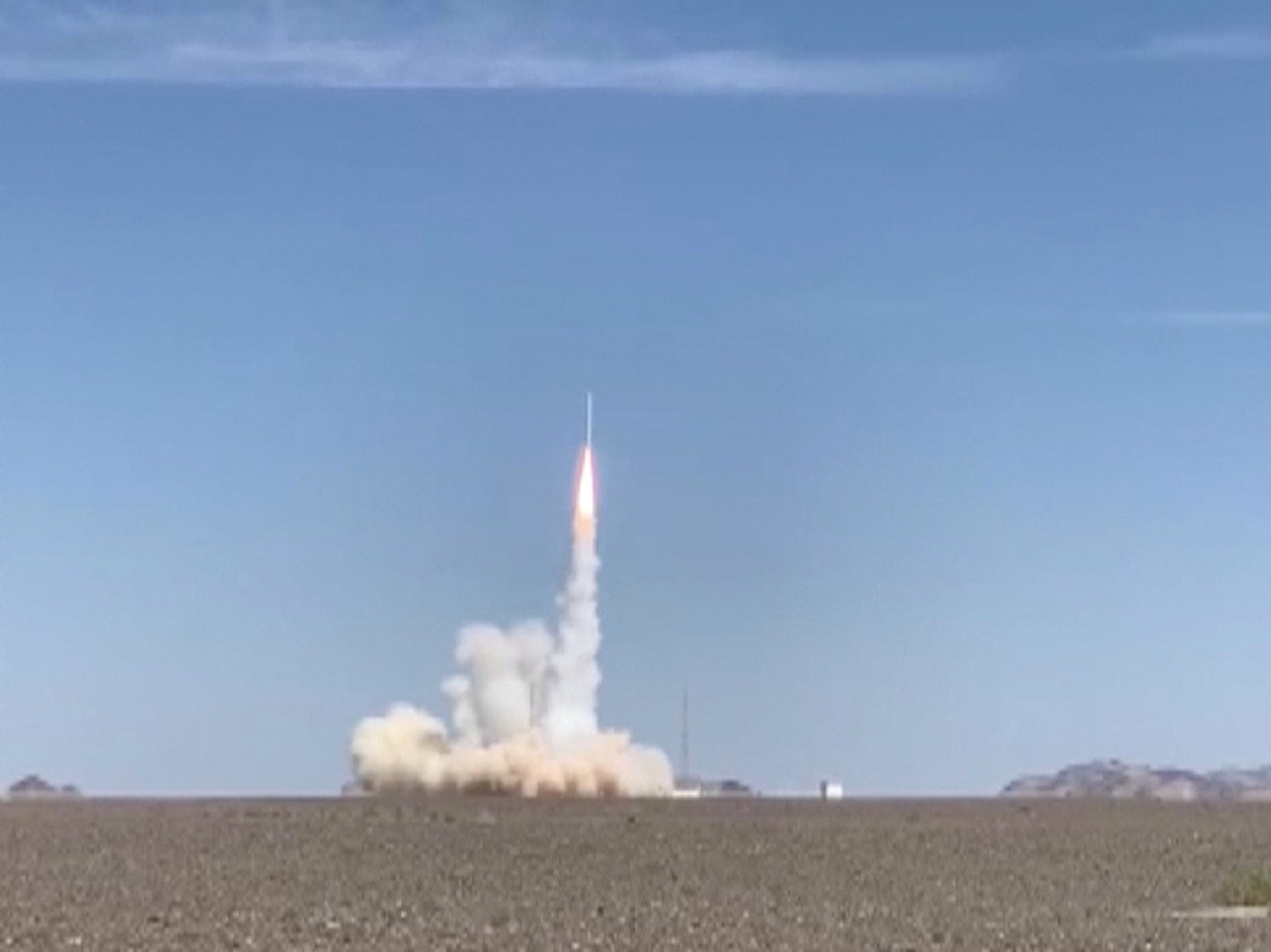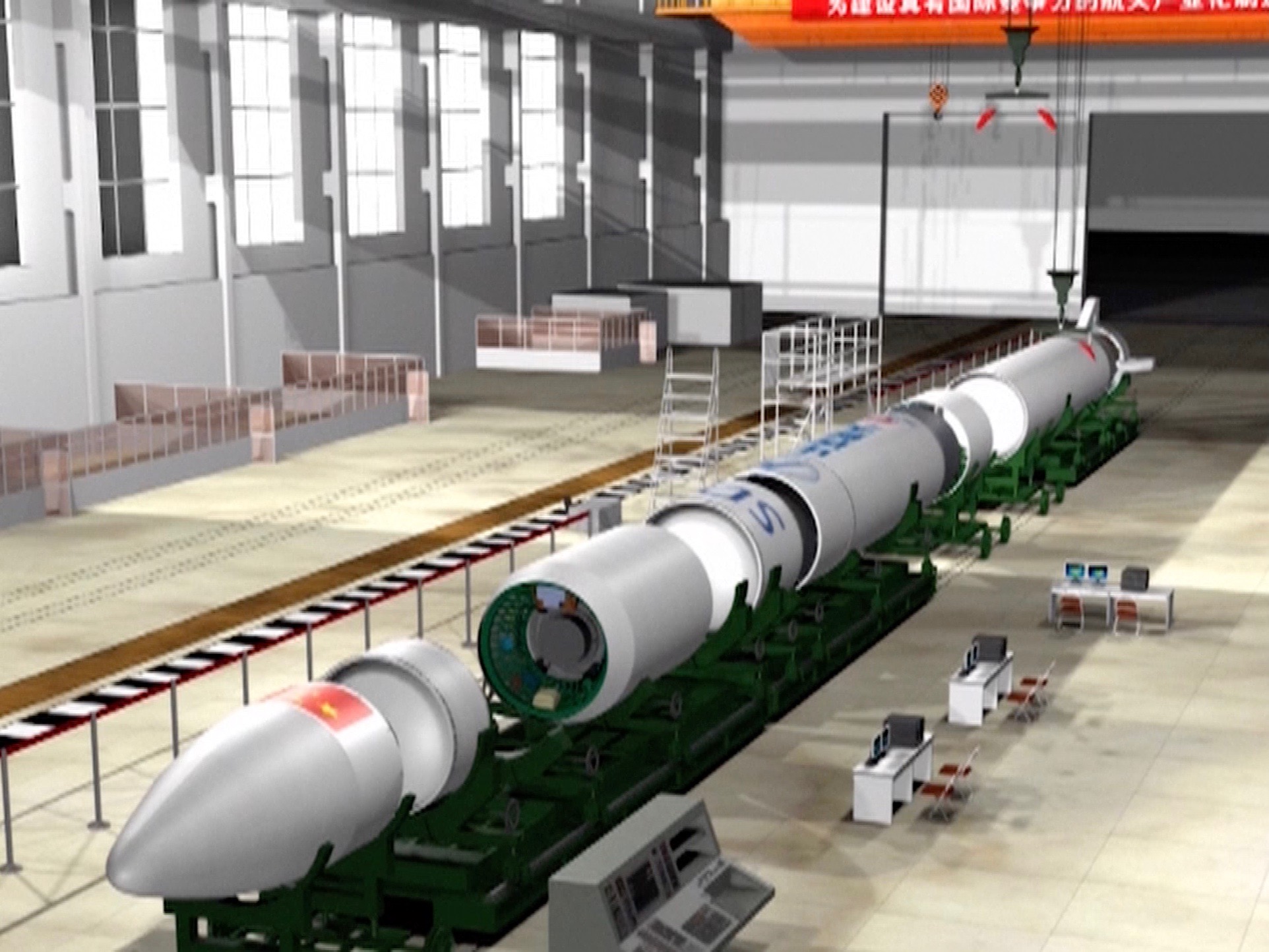China's Private 'Smart Dragon-1' Rocket Aces 1st Mission
China's commercial launch industry is really getting off the ground.
The private Smart Dragon-1 rocket, built by the China Rocket Co. Ltd., completed its first mission Saturday (Aug. 17), successfully launching three small satellites to Earth orbit, Chinese media outlets reported.
The milestone comes less than a month after a different Chinese company, iSpace, achieved the nation's first private orbital launch and just a week after yet another firm, LinkSpace, pulled off a rocket landing after a test flight in Earth's atmosphere.
Related: China in Space: The Latest News and Launches
The four-stage Smart Dragon-1 is similar in size and payload-launching power to Electron, the two-stage booster built by California-based company Rocket Lab. The Chinese launcher, also known as Jielong-1, is 64 feet (19.5 meters) tall and 4 feet (1.2 m) wide, and it weighs 25.5 tons (23.1 metric tons) at liftoff. The rocket can deliver about 440 lbs. (200 kilograms) of payload to a 310-mile-high (500 kilometers), sun-synchronous orbit, according to China's state-run Xinhua news service.
China Rocket isn't a purely private outfit. The company is a subsidiary of the China Academy of Launch Vehicle Technology (CALT), which itself is part of the state-owned China Aerospace Science and Technology Corporation (CASC). CASC is China's main aerospace contractor, and CALT has built most of China's venerable Long March rockets over the years.
Still, China Rocket's existence continues the nation's push to develop a native commercial-launch sector.
Breaking space news, the latest updates on rocket launches, skywatching events and more!
"Commercial launching will have a vast market in the fields such as low Earth orbit internet mobile communication and remote sensing," China Rocket President Tang Yagang told Xinhua.
The company developed the solid-fueled Smart Dragon-1 in less than 18 months, Xinhua reported. The first mission will open the door to many more launches, if all goes according to plan; China Rocket wants to fly four more times before the end of 2020, Xinhua reported.
California's Rocket Lab also plans to ramp up its launch cadence. The company, which launched its eighth Electron mission this morning (Aug. 19), eventually wants to fly weekly, or perhaps even more frequently than that.
Rocket Lab is taking multiple steps to make this happen. The company is building a second launch site in Virginia, for example, to go along with the already-operational one in New Zealand. And Rocket Lab plans to reuse Electron first stages after plucking them out of the air with a helicopter.
The three payloads lofted by Smart Dragon-1 on Saturday were developed by three Beijing-based companies, Xinhua reported. One satellite will provide communications services, another is devoted to remote sensing, and the third is designed to help pave the way for an "Internet of Things" constellation.
- See China's Cool New Rocket Fins in Action!
- Chinese iSpace Achieves Orbit with Historic Private Sector Launch
- Rocket Lab Aims to Win Cubesat-Launching Race
Mike Wall's book about the search for alien life, "Out There" (Grand Central Publishing, 2018; illustrated by Karl Tate), is out now. Follow him on Twitter @michaeldwall. Follow us on Twitter @Spacedotcom or Facebook.

Michael Wall is a Senior Space Writer with Space.com and joined the team in 2010. He primarily covers exoplanets, spaceflight and military space, but has been known to dabble in the space art beat. His book about the search for alien life, "Out There," was published on Nov. 13, 2018. Before becoming a science writer, Michael worked as a herpetologist and wildlife biologist. He has a Ph.D. in evolutionary biology from the University of Sydney, Australia, a bachelor's degree from the University of Arizona, and a graduate certificate in science writing from the University of California, Santa Cruz. To find out what his latest project is, you can follow Michael on Twitter.


